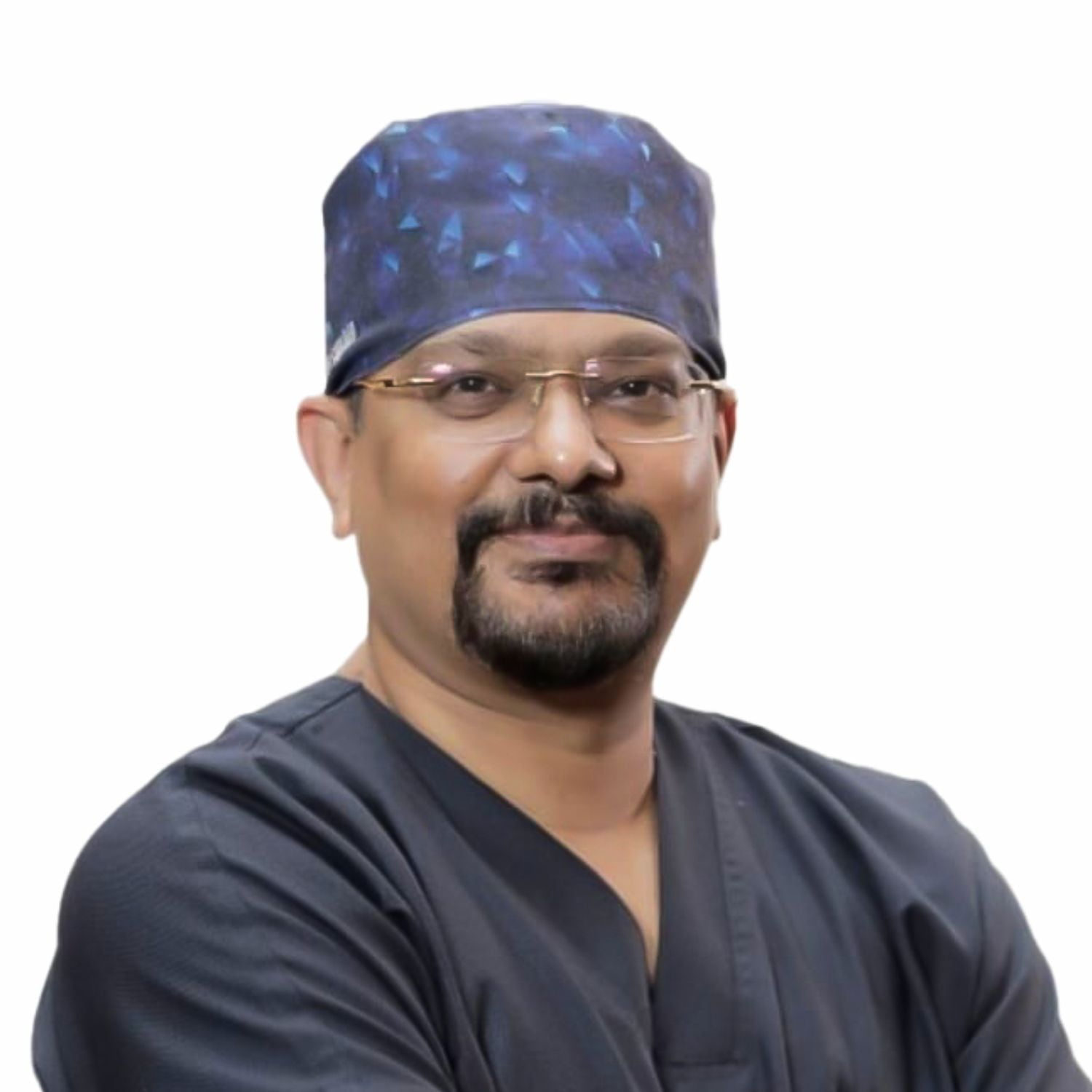Aortic Aneurysm
Dr. Dhiren Shah guides you through the complete process of
Interview with Dr. Dhiren Shah, Cardiac Surgeon
Interviewer (Patient): Good morning, Dr. Shah. Thank you for taking the time to speak with me today. I have some concerns about a condition called an aortic aneurysm. Could you explain what it is?
Dr. Dhiren Shah: Good morning. I’m glad to help. An aortic aneurysm is an abnormal bulge or ballooning in the wall of the aorta, the main artery carrying blood from the heart to the rest of the body. The aorta is the largest blood vessel in the body, and an aneurysm can develop anywhere along it, but most commonly in the abdominal region (abdominal aortic aneurysm) or the chest area (thoracic aortic aneurysm).
Interviewer: What causes an aortic aneurysm?
Dr. Shah: Several factors can contribute to the development of an aortic aneurysm. These include:
- Atherosclerosis: The buildup of plaque in the arteries, which can weaken the aortic wall.
- Hypertension: High blood pressure can put extra stress on the artery walls.
- Genetic factors: Conditions such as Marfan syndrome, Ehlers-Danlos syndrome, and other connective tissue disorders can make the aorta more susceptible to aneurysms.
- Infections and injuries: Though rare, these can also lead to aneurysm formation.
- Lifestyle factors: Smoking is a significant risk factor, as it damages the aortic wall and accelerates atherosclerosis.
Interviewer: What symptoms should someone look out for?
Dr. Shah: Many aortic aneurysms are asymptomatic and are often discovered incidentally during imaging for other conditions. However, when symptoms do occur, they can vary depending on the aneurysm’s location. Common symptoms include:
- Abdominal aortic aneurysm (AAA): A pulsating feeling near the navel, deep, constant pain in the abdomen or on the side of the abdomen, and back pain.
- Thoracic aortic aneurysm (TAA): Jaw, neck, or upper back pain, coughing or hoarseness, shortness of breath, and difficulty swallowing.
If an aneurysm ruptures, it can cause sudden, severe pain, low blood pressure, loss of consciousness, and is a medical emergency requiring immediate attention.
Interviewer: How is an aortic aneurysm diagnosed?
Dr. Shah: Diagnosis usually involves imaging tests. These can include:
- Ultrasound: Often used to detect abdominal aortic aneurysms.
- CT Scan: Provides detailed images of the aorta and can identify the size and location of the aneurysm.
- MRI: Another detailed imaging method to visualize the aorta.
- Chest X-ray: May show an enlarged aorta in thoracic aortic aneurysms.
Interviewer: What treatment options are available for an aortic aneurysm?
Dr. Shah: Treatment depends on the size, location, and rate of growth of the aneurysm, as well as the patient’s overall health. Options include:
- Monitoring: Small, asymptomatic aneurysms may just require regular imaging to monitor their growth.
- Medications: Drugs to control blood pressure and cholesterol can help slow the growth of the aneurysm.
- Surgery: Indicated if the aneurysm is large, growing rapidly, or symptomatic. Surgical options include:
- Open surgical repair: Removing the damaged section of the aorta and replacing it with a synthetic graft.
- Endovascular aneurysm repair (EVAR): A less invasive procedure where a stent-graft is inserted through a catheter to reinforce the aorta and prevent rupture.
Interviewer: What is the prognosis for someone with an aortic aneurysm?
Dr. Shah: The prognosis varies based on the aneurysm’s size, location, and whether it has ruptured. Unruptured aneurysms that are monitored and managed properly have a good prognosis. Ruptured aneurysms, however, are life-threatening and require emergency surgery. The survival rate after rupture is low, emphasizing the importance of early detection and management.
Interviewer: Are there any preventive measures one can take to reduce the risk of an aortic aneurysm?
Dr. Shah: Yes, there are several preventive measures:
- Control blood pressure: Regular monitoring and medication if necessary.
- Healthy lifestyle: A balanced diet, regular exercise, and avoiding smoking.
- Manage cholesterol levels: Through diet and medication if needed.
- Regular check-ups: Especially for those with risk factors like a family history or genetic conditions.
Interviewer: What advancements in treatment and management have there been in recent years?
Dr. Shah: Advances in imaging technology have greatly improved our ability to detect and monitor aneurysms. Endovascular techniques, such as EVAR, have become more refined and widely used, offering a less invasive option with shorter recovery times compared to open surgery. Additionally, ongoing research into the genetic and molecular basis of aneurysms may lead to new preventative and therapeutic strategies in the future.
Interviewer: That’s very informative, Dr. Shah. Before we conclude, is there any advice you would give to someone who might be at risk of an aortic aneurysm?
Dr. Shah: My advice would be to maintain a healthy lifestyle, manage your blood pressure and cholesterol levels, and avoid smoking. Regular medical check-ups are crucial, especially if you have risk factors. If you experience any symptoms suggestive of an aneurysm, seek medical attention promptly. Early detection and management are key to preventing complications.
Interviewer: Thank you so much for your time and expertise, Dr. Shah. This has been incredibly helpful.
Dr. Shah: You’re welcome. I’m glad I could provide some clarity on this important issue. Stay healthy and take care.
Available
Monday to Saturday: 9am - 6pm
Address
CIMS Hospital in Ahmedabad, Gujarat

